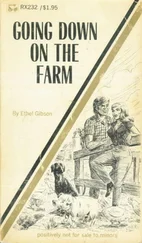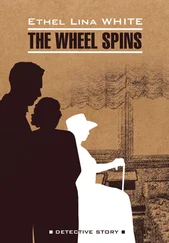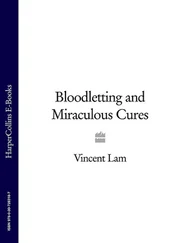Ethel Vincent - Newfoundland to Cochin China
Здесь есть возможность читать онлайн «Ethel Vincent - Newfoundland to Cochin China» — ознакомительный отрывок электронной книги совершенно бесплатно, а после прочтения отрывка купить полную версию. В некоторых случаях можно слушать аудио, скачать через торрент в формате fb2 и присутствует краткое содержание. Жанр: Путешествия и география, foreign_antique, foreign_prose, на английском языке. Описание произведения, (предисловие) а так же отзывы посетителей доступны на портале библиотеки ЛибКат.
- Название:Newfoundland to Cochin China
- Автор:
- Жанр:
- Год:неизвестен
- ISBN:нет данных
- Рейтинг книги:5 / 5. Голосов: 1
-
Избранное:Добавить в избранное
- Отзывы:
-
Ваша оценка:
- 100
- 1
- 2
- 3
- 4
- 5
Newfoundland to Cochin China: краткое содержание, описание и аннотация
Предлагаем к чтению аннотацию, описание, краткое содержание или предисловие (зависит от того, что написал сам автор книги «Newfoundland to Cochin China»). Если вы не нашли необходимую информацию о книге — напишите в комментариях, мы постараемся отыскать её.
Newfoundland to Cochin China — читать онлайн ознакомительный отрывок
Ниже представлен текст книги, разбитый по страницам. Система сохранения места последней прочитанной страницы, позволяет с удобством читать онлайн бесплатно книгу «Newfoundland to Cochin China», без необходимости каждый раз заново искать на чём Вы остановились. Поставьте закладку, и сможете в любой момент перейти на страницу, на которой закончили чтение.
Интервал:
Закладка:
One has constantly to remember that six or seven years ago all this country through which we are passing was an unexplored wilderness. A little band of plate-layers, headed by a surveyor, true pioneers, must have forced their way through, hewing trees, blasting rock, and making the silent woods resound with the voice of civilization, occasionally coming across the track of some Indian encampment or the marks of a bear. It must have required great forethought and organization from headquarters to have the plant and stores ready to push on day by day, whilst the railway in rear acted as the pioneers' single communication with the outside world, as they plunged deeper and deeper into the forests. The average speed of construction was about five miles a day, and the greatest length laid in one day was twelve and a half miles. The portion of line between Port Arthur and Fort William was the most difficult to devise. Indeed, several times the engineers despaired. The railway is divided into divisional sections, with a superintendent at each. These again are divided into sections, with a surveyor in charge; and we frequently pass their lonely section houses. Every portion of the line is inspected once a day, the workmen using a trolly, which can be lifted on and off the track. It is a single line, and there is only one passenger train daily east and west.
The trains are very long and heavy, often consisting of eight or nine cars some eighty feet in length, weighing as much as fifty tons each. They would jump the track if lighter. Our train to-day was of this length, and carried a human freight of 286 persons, exclusive of the numerous officials. The sleepers or sleeping-cars are most elegant, with their polished pine wood inlaid with mother-of-pearl, and their pale sea-green brocade hangings.
The colonist cars on these trains are excellent, and always, we noticed, well filled. They have berths like the sleeper, only with no upholstery, but the colonist can buy a mattress and pillow at Montreal for a dollar or two. They have a stove where they can cook their own provisions, and on landing from the ocean steamers they get into this car, live in it, and come as far west as they want to without change or stoppage.
From Fort William we passed through a wild, rocky country, following the line of the Kaministiquia, a shallow river scrambling over a rocky course. There are a few of these soft liquid Indian names, embodying some symbolical or romantic ideal, still left; but they are fast dying out, and the practical settler is changing them to a more prosaic but pronounceable nomenclature.
It was through this lonely district, then, unexplored by white man, that for ninety-five days Wolseley, in 1870, led his troops against the Indians. They marched 1000 miles from Fort William to Fort Garry, utilizing the waterway of the lakes and rivers where possible. At Savanne we see two of his flat-bottomed boats, lying rotting in the stream near an Indian village.
We have dinner in the private car of Mr. Howland and Mr. Wilkie, the chairman and general manager of the Imperial Bank of Toronto. Seated at the end of the train, we watch the twin lines of railway uncoiling themselves in a straight line for mile after mile. An occasional section-house, a station, which is often only a wooden shed on a platform, a board with the number of the section on it, and, at long intervals, a huge red tank for watering the engine, is all we see. Night closes in on this lonely country, and we sleep in our berths, while the engine steams and pants along into the darkness, hour after hour through the long, long night.
In the cold early morning we reach Rat Portage, passing from the state of Ontario into Manitoba. Rat Portage is a wooden village of 1400 inhabitants (this is considered quite a goodly population for this sparsely-peopled country); and has the largest flour mill in Canada. It lies at the outlet of the beautiful Lake of the Woods, which is forty miles long and studded with islands.
A brake has broken and the train is divided, the first half taking on the dining-car. Hungry and impatient, the passengers wait for another to be attached, and stand on the carriage platform ready to rush on board. But, as it passes, a howl of disappointed hunger goes up, for some knowing ones have jumped off the cars, and filled it before it leaves the siding.
We are still travelling through the same rock-bound country, ungainly masses of rock protruding through a scrub growth of dwarf trees. We continually pass beautiful lakes, placid sheets of water hidden away in hollows. This is succeeded by a run through some "muskeg" or black peaty bog land, where flourish rank grasses against a background of bushy poplar trees.
Thirty or forty miles from Winnipeg the country opens out and gradually assumes a prairie character. The land is quite flat now, covered with coarse yellow grasses, and sprinkled with wild flowers. It is a rich feast of colours. There are great patches of gorgeous wild sunflowers, masses of purple and white michaelmas daisies, growing more plenteously here on the open prairie, than when cultivated in our cottage gardens at home; there are bluebells and lupins, blue, pink, and white, marsh mallows, cyclamen, and acres of that weed-like growth, the golden rod. Isolated houses, becoming more frequent, tell us we are nearing Winnipeg. We cross the Red river and are in the station.
Winnipeg is the old Fort Garry settlement of the Hudson Bay Company. Twenty years ago, or in 1871, population was 100, now, in 1891, it is 30,000.
The town is set down in the midst of the prairie. Main street follows the winding of the old Indian trail which takes in the deep bend of the Red river. The City Hall in this street, or "on" as the Canadians would say, is a very handsome new-looking structure. It front of it stands the column erected to the memory of the soldiers who fell in the North-West rebellion of 1870. It is surmounted by a volunteer on guard, wrapped in his fur coat, and with his fur cap on his head. The streets are paved with blocks of wood, but the foot pavements are still boarded; indeed Winnipeg is a strange mixture, with Eastern civilization meeting in this border city, the Western or rough-and-ready methods of the settler. It is only interesting on this account.
In the streets there are bullock carts bringing in cradles of hay from the prairie; sulkies, which are constructed of two wheels and a tiny board for a driver's seat; and buckboards, used for purposes of all kinds. Nor must I forget the little carts with their tandems of dogs. These are a mongrel breed, and are much used, especially in winter, when they are driven four, six, or a dozen in hand in sleighs. As we get further west, the breed of horses improves. There are country yokels with burnt faces, coarse straw hat, and flannel shirt, gazing open-mouthed at the store windows, for Winnipeg is to them what London is to our country lads. Here is a family party of Indians emerging from a shop with numerous parcels, to the evident joy of the squaw. But what strikes you so much is, that you may pass from this handsome street of fine stores, straight out on to the broad expanse of prairie.
On the block of Government land stands the fine group of stone buildings of the Parliament House, together with the Ministerial offices for the Province of Manitoba, the Governor's residence, and the wooden barracks enclosed in a square. We stayed at the Clarendon Hotel, whose days are I fear numbered, as the Northern Pacific Company are just completing a magnificent red sandstone hostelry. It is shown as one of the sights of Winnipeg.
Mrs. Adams, wife of an old Royal Welsh brother-officer of my husband's, kindly took me for a drive in the afternoon. On the outskirts of the town the Assiniboine river takes a deep bend, in which there is some woodland. Trees are scarce on the prairie, and what there are—poplar, oak and maple—are all stunted in their growth from exposure to the north-west blast, which sweeps in winter across the great waste, a piercing, biting wind blowing from over acres and acres of snow. In this green belt there are many handsome houses, built in an ambitious style of architecture, with towers and porticoes and balustrades. They were chiefly constructed during the great "boom" of nine years ago, a disastrous event that has left its mark. The town still suffers from the troubles which quickly followed. Families are yet living under the cloud of the financial bankruptcy which then overtook them.
Читать дальшеИнтервал:
Закладка:
Похожие книги на «Newfoundland to Cochin China»
Представляем Вашему вниманию похожие книги на «Newfoundland to Cochin China» списком для выбора. Мы отобрали схожую по названию и смыслу литературу в надежде предоставить читателям больше вариантов отыскать новые, интересные, ещё непрочитанные произведения.
Обсуждение, отзывы о книге «Newfoundland to Cochin China» и просто собственные мнения читателей. Оставьте ваши комментарии, напишите, что Вы думаете о произведении, его смысле или главных героях. Укажите что конкретно понравилось, а что нет, и почему Вы так считаете.












